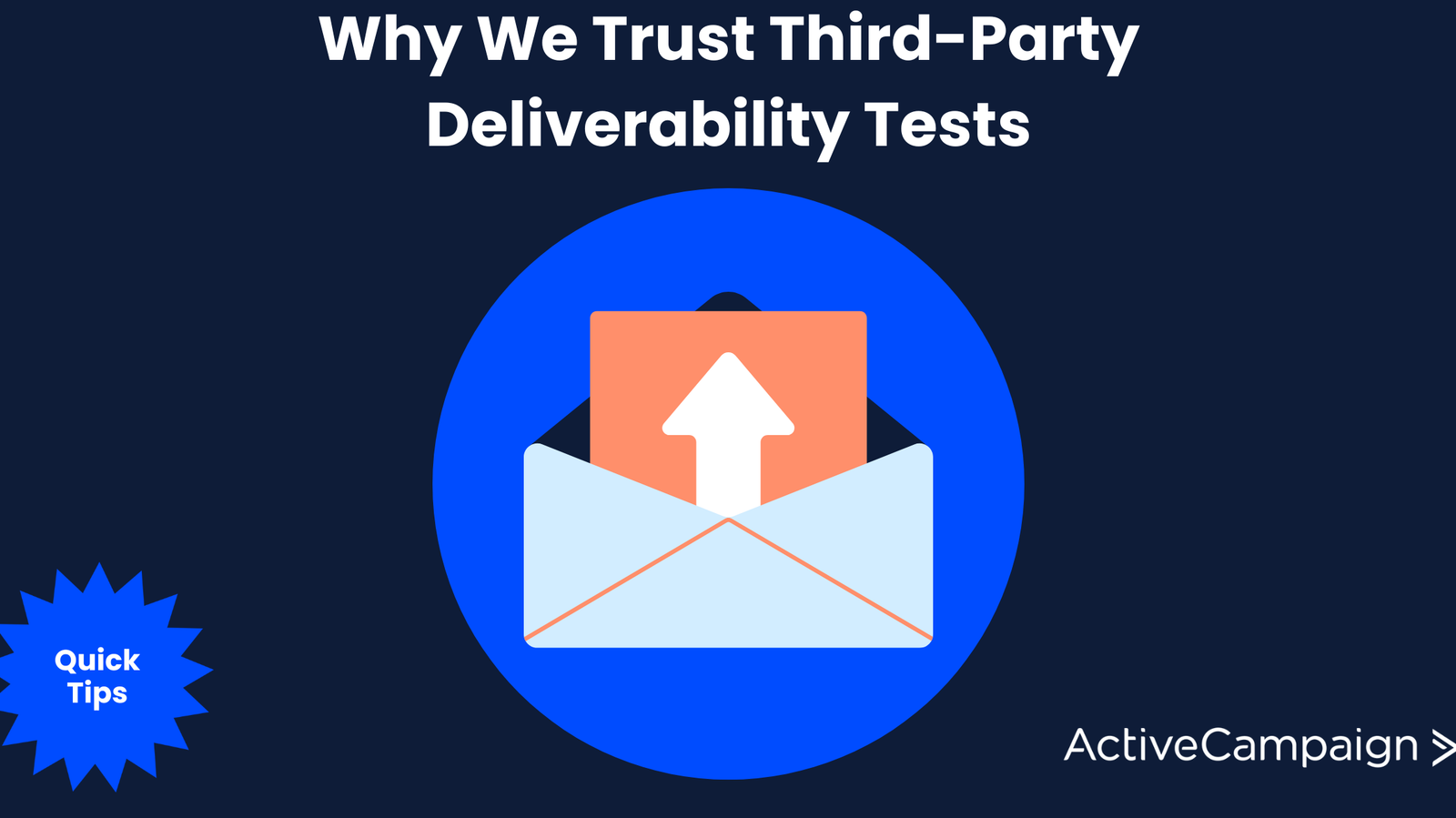This is part of our Quick Tip series of shorter, single-focused articles. This particular one was inspired by a LinkedIn post by Casey Hill.
When it comes to comparison articles from brands, I’m often a bit skeptical. After all, there's a vested interest in showcasing their products in the best light. But when a comparison comes from a third party? That's a different story.
It's even better if it's backed by clear methodology and data-driven processes. And the gold standard? Multiple, unsponsored third-party sources with robust data and an expansive methodology.
This is why we are thrilled that ActiveCampaign consistently ranks in the top 1-3 in third-party deliverability tests for Email Service Providers (ESPs). Deliverability is crucial, but the technical side can get complex quickly.
Let’s give a high-level perspective on how to think about email inboxing.
We highly recommend checking out Kay Peacey on LinkedIn for a deep dive into deliverability.
The three pillars of email inboxing
Three major factors decide whether your emails make it to the inbox:
- Your domain reputation
- The sending ESP's reputation
- Your sender best practices
In this context, it’s important to note that deliverability means whether a message arrives at all. Even if a message lands in spam or the promotions tab, it’s still technically delivered.
Why deliverability varies between ESPs
Given that 2/3rds of deliverability is on you—the brand—your sending practices and domain reputation are critical. But why do different email automation tools (ESPs) have varying deliverability rates?
Here are a few insights based on our experience:
- Shared IP pools: Most ESPs send emails from a pool of shared IP addresses. If an ESP has lax standards about the types of leads they allow, it can negatively affect their sending reputation. For instance, if an ESP works heavily with supplement companies, NFT/crypto businesses, and political campaigns, they are likely to face more domain reputation issues compared to an ESP focused on B2B brands.
- Infrastructure considerations: Due to their volume, smaller ESPs often face more outages and acute issues. Imagine a company sending 10 million emails a week, and a massive sender within that pool sends a spam campaign to 1 million people. The ESP’s reputation gets pinged, affecting many customers. Conversely, a brand sending 20 billion emails a week can absorb a bad 1 million email sends without a significant global impact.
- Stability of sending infrastructure: Not all sending infrastructures are created equal. Larger ESPs with budgets of $100 million+ tend to have more stable, established servers, and whole teams dedicated to deliverability. In contrast, smaller ESPs might not even have a dedicated deliverability team.
ActiveCampaign’s stellar deliverability
ActiveCampaign consistently ranks top in deliverability tests conducted by multiple third-party sources. This consistent performance is a testament to its robust infrastructure and stringent sending standards.

This study showcases why ActiveCampaign is a leader in ensuring that your emails land where they should—in your subscribers' primary inboxes.
Interested in the full study and methodology behind it? Check it out here.
If content is king, deliverability is the emperor
Choosing the right ESP can significantly impact your email marketing success. While it's essential to maintain good sender practices and a solid domain reputation, the ESP you choose also plays a crucial role.
Remember, deliverability is a shared responsibility between you and your ESP. By understanding the factors influencing inboxing and choosing an ESP with a strong track record, you can significantly improve your email marketing outcomes.
And, if you’re looking for the right email marketing platform, ActiveCampaign's consistent top rankings in third-party deliverability tests make it a reliable choice for anyone serious about email marketing. Get started with a 14-day free trial today!








